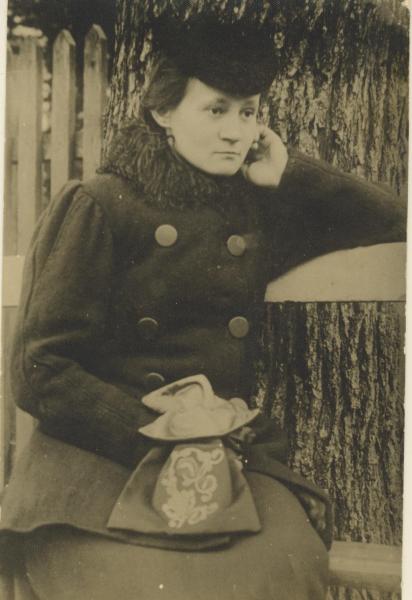Marija Lastauskienė on:
[Wikipedia]
[Google]
[Amazon]
 Marija Lastauskienė '' née'' Ivanauskaitė ( pl, Maria Lastowska, née Iwanowska) (15 May 1872 in
Marija Lastauskienė '' née'' Ivanauskaitė ( pl, Maria Lastowska, née Iwanowska) (15 May 1872 in
 Marija Lastauskienė '' née'' Ivanauskaitė ( pl, Maria Lastowska, née Iwanowska) (15 May 1872 in
Marija Lastauskienė '' née'' Ivanauskaitė ( pl, Maria Lastowska, née Iwanowska) (15 May 1872 in Šiauliai
Šiauliai (; bat-smg, Šiaulē; german: Schaulen, ) is the fourth largest city in Lithuania, with a population of 107,086. From 1994 to 2010 it was the capital of Šiauliai County.
Names
Šiauliai is referred to by various names in different la ...
– 19 July 1957 in Kaunas) and her sister Sofija Pšibiliauskienė were Lithuanian sisters who wrote under the shared pen name '' Lazdynų Pelėda'' ('' Hazel Owl
Owls are birds from the order Strigiformes (), which includes over 200 species of mostly solitary and nocturnal birds of prey typified by an upright stance, a large, broad head, binocular vision, binaural hearing, sharp talons, and feathers a ...
''). Marija married Belarusian literary critic and politician Vaclau Lastouski
Vaclaŭ Justynavič Lastoŭski (, , russian: Вацлав Усти́нович Ласто́вский), 8 November 1883 – 23 January 1938) was a leading figure of the Belarusian independence movement in the early 20th century and the Prime Min ...
(Lastauskas), but divorced after a few years.
Biography
Born inŠiauliai
Šiauliai (; bat-smg, Šiaulē; german: Schaulen, ) is the fourth largest city in Lithuania, with a population of 107,086. From 1994 to 2010 it was the capital of Šiauliai County.
Names
Šiauliai is referred to by various names in different la ...
, Lastauskienė grew up and spent her youth in a family estate in Paragiai. Her father was painter Nikodem Iwanowski. Her family, of Polish–Lithuanian nobility stock, was influenced by Polish culture. Therefore, her native language was Polish and she had difficulties writing in Lithuanian. Lastauskienė did not have formal education and self-educated reading various Polish authors. At the age of sixteen she moved to Warsaw
Warsaw ( pl, Warszawa, ), officially the Capital City of Warsaw,, abbreviation: ''m.st. Warszawa'' is the capital and largest city of Poland. The metropolis stands on the River Vistula in east-central Poland, and its population is officia ...
to work as a seamstress at her aunt's shop. She later moved to Saint Petersburg
Saint Petersburg ( rus, links=no, Санкт-Петербург, a=Ru-Sankt Peterburg Leningrad Petrograd Piter.ogg, r=Sankt-Peterburg, p=ˈsankt pʲɪtʲɪrˈburk), formerly known as Petrograd (1914–1924) and later Leningrad (1924–1991), i ...
and Riga, before settling down in Vilnius
Vilnius ( , ; see also other names) is the capital and largest city of Lithuania, with a population of 592,389 (according to the state register) or 625,107 (according to the municipality of Vilnius). The population of Vilnius's functional urb ...
, where her sister lived, in 1907. Encouraged by her sister, Lastauskienė began writing more actively. During World War I, the sisters moved back to their childhood home in Paragiai. In 1938 Lastauskienė moved to Kaunas, where she died in 1957. Since 1966 a museum is established in their former farmstead. In 1993 a monument to the sisters was erected in Vilnius
Vilnius ( , ; see also other names) is the capital and largest city of Lithuania, with a population of 592,389 (according to the state register) or 625,107 (according to the municipality of Vilnius). The population of Vilnius's functional urb ...
(sculptor Dalia Matulaitė, architects Jūras Balkevičius and Rimantas Buivydas).
Works
She began writing at the age of seventeen and her first story ''Bez steru'' (''Without a Rudder'') was published in a Warsaw newspaper. However, influenced by her older sister Sofija Pšibiliauskienė, Lastauskienė began writing for Lithuanian press. Pšibiliauskienė would freely edit and translate her sister's works into Lithuanian and publish under the common pen name ''Lazdynų Pelėda''. It is unclear how many of the works published between 1905 (the first time the pen name was used) and 1927 (Sofija's death) should be attributed to Lastauskienė and how much of the original work remained after Pšibiliauskienė's edits. The public did not know that there are two people writing under the same name. Literary critics tend to treat this body of works as one item as they are similar in themes and language. After her sister's death, Lastauskienė wrote in Lithuanian and her daughter corrected the language. The first works published under her own name were short story ''Auka'' (''Sacrifice'', 1907–1908) and novel ''Šviesa ir šešėliai'' (''Light and Shadows'', 1925–1926). Influenced byPolish literature
Polish literature is the literary tradition of Poland. Most Polish literature has been written in the Polish language, though other languages used in Poland over the centuries have also contributed to Polish literary traditions, including Latin, ...
, Lastauskienė's work share sentimental idealism and melancholy, but also have features of realism. Without formal education, her works were weaker on literary techniques, character depth, or stylistic devices, but attracted readers by offering imaginative and captivating plots. Her works usually feature a protagonist, idealist desiring a happy and peaceful life, who is broken by harsh reality: poverty, social inequality, rigid traditions, or simply unexpected accidents. Lastauskienė showed sympathy for these characters and condemned the oppressors. Lastauskienė more often depicted city dwellers, factory workers, and intelligentsia than villagers and farmers.
References
{{DEFAULTSORT:Lastauskiene, Marija 1872 births 1957 deaths People from Šiauliai People from Shavelsky Uyezd Lithuanian people of Polish descent 20th-century Lithuanian women writers Burials at Petrašiūnai Cemetery Pseudonymous women writers Writing duos 20th-century pseudonymous writers 20th-century Polish women writers